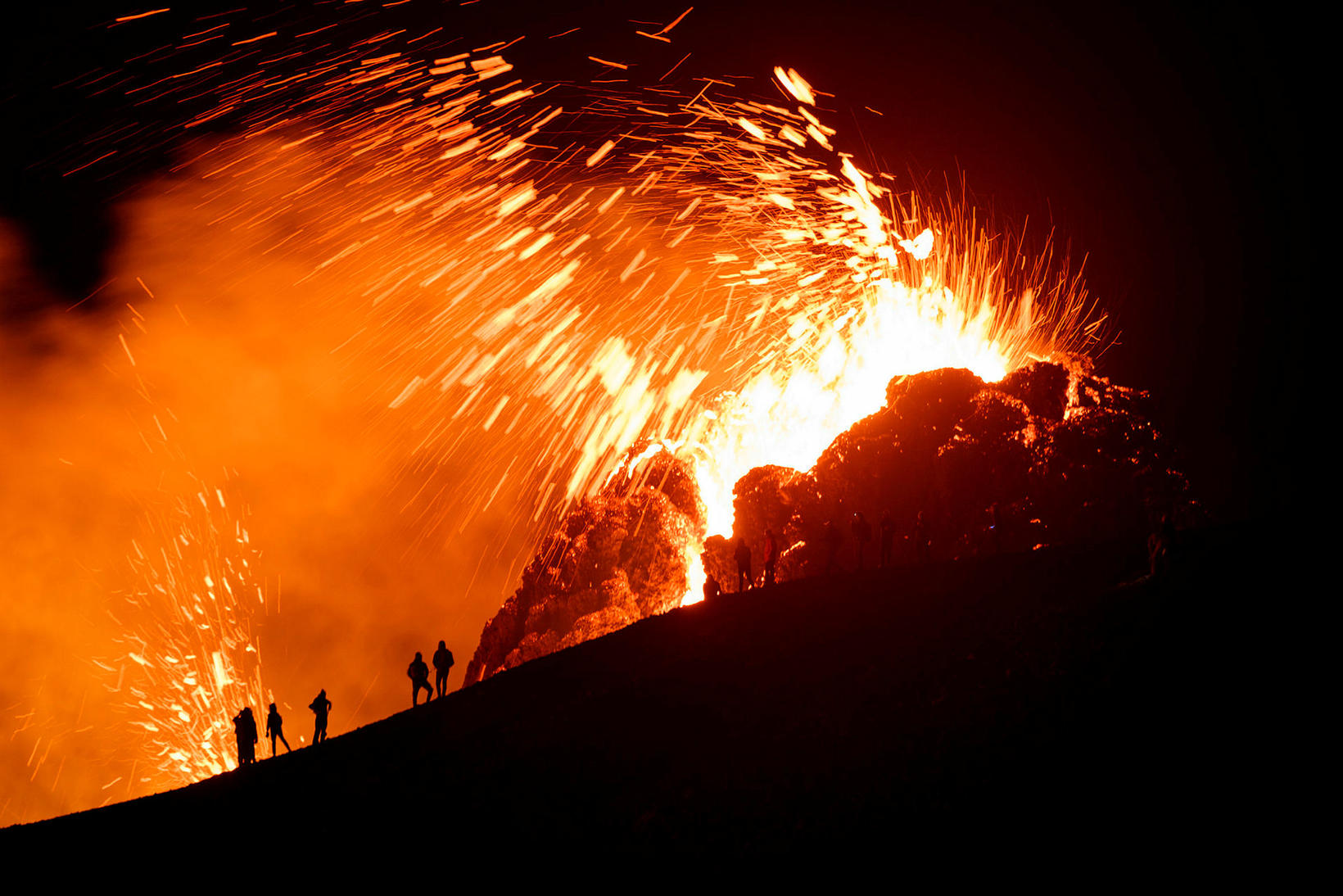Severe Damage Due to Off-Road Driving
Traffic through Vigdísarvallaleið route increased during the eruption in Fagradalsfjall mountain. mbl.is/Kristinn Magnússon
The condition of tourist destinations within protected areas in Iceland has improved, and the number of destinations considered at risk is down, according to a newly published report on 148 destinations from the Environment Agency of Iceland, Morgunblaðið reports.
Still, one destination has been added to the red list of places at risk, meaning an area where traffic is such that the area is at risk of losing its status as protected, necessitating action. The area in question is Vigdísarvellir fields and Vigdísarvallaleið route on the Reykjanes peninsula.
The reason for the deteriorating condition of the area is believed to be increased traffic to the Fagradalsfjall eruption site last year. Off-road driving, which is prohibited in Iceland, has severely damaged vegetation and left huge scars in the landscape. In addition, visitors have left a great deal of garbage in the area. Not only was the Vigdísarvallaleið used as a route to the eruption site, but it was used, too, as a place to drive 4x4s for fun. Signs prohibiting motorized vehicles were ignored.
The report reveals that the condition of 43 percent of destinations within protected areas is regarded as very good. In addition, the number of destinations regarded in a good condition increased from 60 to 64 last year.
Besides, the number of areas listed as orange, or potentially at risk of losing their status as protected, decreased from 18 to 15 last year. The orange-listed destinations are all located either in the Fjallabak area of the highlands or in Southwest Iceland. One of those is Tröllabörn hornitos, east of Reykjavík, which have been damaged by projects in the area.
“In the year 2020, the number of areas in good condition increased considerably,” the report reads. “That is mainly tied to a drop in the number of tourists. The condition of the areas can be expected to worsen again if the number of tourists increases without infrastructure being added.”
Thanks to successful infrastructure and planning, almost all destinations within the national parks of Snæfellsjökull, Vatnajökull and Þingvellir got a favorable review in the assessment.








